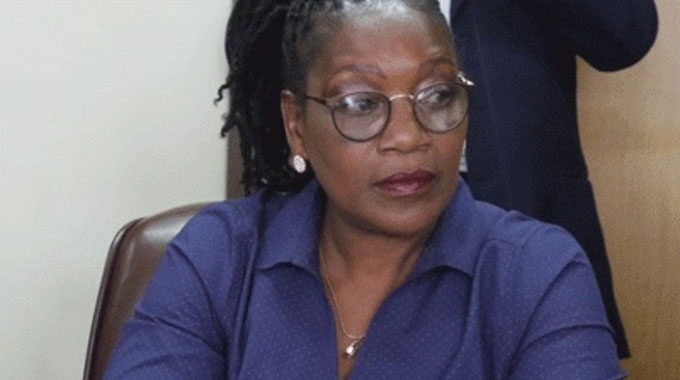NDS to industrialise, modernise economy

PROPOSED NATIONAL DEVELOPMENT STRATEGY: 2021-2025
Cabinet considered and approved the National Development Strategy 1: 2021-2025, which was presented by the Minister of Finance and Economic Development. The National Development Strategy 1: 2021-2025 (NDS 1) is the Second Republic’s first of two five-year medium-term plans aimed at realising the country’s Vision 2030. The two plans will, therefore, run under the theme “Towards a Prosperous and Empowered Upper Middle Income Society by 2030”.
The National Development Strategy 1 outlines the policies, legal and institutional reforms, programmes and projects for identified National Priorities that will be implemented over the Strategy’s five-year lifespan. This will help to achieve accelerated, high, inclusive, broad-based and sustainable economic growth and development. The NDS was a result of an extensive and structured consultative process involving stakeholders. The Strategy succeeds the Transitional Stabilisation Programme (TSP): 2018-2020, which focused on, inter-alia, stabilising the macro-economy and the financial sector, and thus laid the foundation required for economic growth. The report on the TSP will be published at the end of the programme period.
NDS 1 will therefore build on the successes and challenges of the Transitional Stabilisation Programme and aim to steer the economy onto a growth path with an average growth rate of 5 percent per annum over the Strategy Period.
The broad objectives of NDS1 are as follows:
To strengthen macroeconomic stability, characterised by low and stable inflation, as well as a stable exchange rate;
To achieve and sustain inclusive and equitable real GDP growth;
To promote new enterprise development, employment and job creation;
To strengthen social infrastructure and social safety nets;
To ensure sustainable environmental protection and resilience;
To promote good governance and corporate social investment; and
To industrialise and modernise the economy.
NDS has the following 14 priority areas: Economic Growth and Stability; Food Security and Nutrition; Governance; Moving the Economy up the Value Chain and Structural Transformation; Human Capital Development; Environmental Protection, Climate Resilience and Natural Resource Management; Housing Delivery; ICT and the Digital Economy; Health and Well-being; Transport, Infrastructure and Utilities; Image-building and International Engagement and Re-engagement; Social Protection; Youth, Sport and Culture; and Devolution.
PROPOSED REMUNERATION REVIEW FOR CIVIL SERVANTS
Noting its obligations to pay a decent wage, Government has reviewed upwards the salary increase offer to civil servants to 40 percent which will be awarded to deputy director grade and below. In addition to the salary increase, the teachers will also be awarded a 10 percent risk allowance. The new basic salary package for the teacher is now $18 237, which is above the Poverty Datum Line (PDL). This means that the compounded review percentage of the teacher grade salary is 1 284 percent since the beginning of the year. The lowest paid civil servant will receive a salary of $14 528. This is effective from 1st November 2020.
PROGRESS UPDATE ON THE IMPLEMENTATION OF THE 6TH 100-DAY CYCLE PRIORITY PROJECTS
Cabinet received progress reports in the implementation of the following 6th 100-Day Cycle Priority Projects, from the Ministers of Primary and Secondary Education; Local Government and Public Works; Higher and Tertiary Education, Innovation, Science and Technology Development; Youth, Sport, Arts and Recreation; and Information Communication Technology, Postal and Courier Services.
The Minister of Primary and Secondary Education informed Cabinet that a total of 36 Satellite Schools in Chiredzi district, Masvingo province were registered after infrastructure was upgraded. The minister also outlined progress made in the following 6th 100-Day Cycle Priority Projects:
49 boreholes were rehabilitated and drilled in Lupane District;
Rehabilitation of 24 ablution blocks and hand-washing facilities in Chimanimani and Chipinge;
One girls’ dormitory at Chapoto Secondary School in Mbire district.
The Minister of Local Government and Public Works reported that the construction of the superstructure of the Bona Clinic in Bubi district, Matabeleland North province was completed and the outstanding work constituting the project is overall, at 90 percent completion.
Under the project, Tsholotsho disaster recovery project in Tsholotsho district, modern housing units are being constructed to house those that were affected by Cyclone Dineo-induced floods in 2016/17 rainy season, and the 10 housing units being constructed under this phase are at various levels of completion. The minister reported progress made in the following projects: Mukuva Bridge, Guruve, Mashonaland Central; Water Supply and Sanitation Rehabilitation Project II-Dutchman’s Pool, Kwekwe-Midlands and Mabula sewer treatment plant, Zvishavane.
Cabinet notes with satisfaction, huge strides made under the Ministry of Higher and Tertiary Education, Innovation, Science and Technology Development.
The construction of the University of Zimbabwe Zim Agro-Industrial Park, the superstructure is now almost complete while the Chinhoyi Agro-Industrial Park Dairy and Milk Processing Unit is 80 percent complete. The construction of a model milking parlour for small holder farmers is complete.
The establishment of a Goat Genetics Research Centre at Bindura University of Science Education continues, while the establishment of the Simon Mazorodze School of Health Sciences at the Great Zimbabwe University is at 85 percent complete.
The Multi-Purpose Teaching and Learning Building at the Manicaland State University of Applied Sciences was completed. Furthermore, 12 out of the 20 Universities were provided with internet services under the e-Learning Facility for Higher and Tertiary Education Institutions.
The Minister of Youth, Sport, Arts and Recreation highlighted that construction of a Recreational Centre and a multi-purpose sports facility in Mufakose, Harare, is now complete and ready for official launch.
As part of Government’s response to assist those affected by the pandemic, a total of 2 548 athletes and 867 artistes benefited from the tune of$11,8 million under the Athletes and Artistes Covid-19 Relief Fund.
The entrepreneurship development support to beneficiaries of the Youth Covid-19 Relief Fund has commenced, and company registration and formalisation underway.
The refurbishment of Murehwa Cultural Centre, computer lab and installation of high-speed internet connectivity is 30 percent completion.
Meanwhile, as part of Government’s thrust to upgrade sporting facilities to acceptable international standards, satisfactory progress has been made to date in renovating the National Sports Stadium as the project is 90 percent complete. What remains outstanding is the procurement of bucket seats, turnstiles and e-ticketing.
The Minister of Information Communication Technology, Postal and Courier Services reported that six shared base stations have been completed at Showgrounds, Domboshava; Cowdry Park in Bulawayo; Zindoga in Harare; Ruwange in Nyanga; Chikonohono in Chinhoyi and Mandara in Harare.
Under the internet connection to Higher and Tertiary institutions project, two institutions, namely Mutare Polytechnic and Morgenster Teachers’ College were connected. Under the schools digitalisation programme, 13 of the targeted 17 schools were digitalised.
On a related project, 15 schools were connected to the internet under the Schools Connectivity (e-learning) programme. A total of 10 fully furnished and equipped Community Information Centres (CICs) were established.
ZIMBABWE’s RESPONSE TO THE CORONAVIRUS (COVID-19)
Cabinet received the weekly update on the Covid-19 pandemic from the Minister of Defence and War Veterans Affairs, Honourable OCZ Muchinguri-Kashiri, chairperson of the Ad-Hoc Inter-Ministerial Task Force on the Covid-19 Outbreak.
The country has now recorded 8 362 confirmed Covid-19 cases compared to the 8 471 reported last week. The recovery rate is 94.2 percent. New cases for week 44 stood at 109, compared to 105 in week 43.
A total of 5 600 PCR tests were conducted during the reporting period compared to 5 457 tests carried out the previous week.
In order to enable the smooth flow of returnees at the Beitbridge Border Post, the Embassy of Zimbabwe in South Africa has drawn up Standard Operating Procedures (SOPs). All bus operators involved in the repatriation of Zimbabwean nationals from South Africa are required to obtain clearance from the respective Zimbabwean Consulate in Cape Town and Johannesburg two days before departure. The bus operators should provide full names of all passengers; passport or temporary travel document numbers of the passengers; vehicle and trailer registration details; final destination in Zimbabwe and the identification details of the drivers.
Both passengers and bus crews should have Covid-19 negative certificates from a registered laboratory and obtained within 48 hours from departure.
Bus operators must ensure that passengers have requisite travel documents before purchasing tickets. A maximum of five buses will be cleared per day.
Under primary and secondary education, the attendance of learners was 51.8 percent, while that of teachers is 25.7 percent For the final examination classes, learner attendance was 42 percent, while the national average on teacher availability marginally increased from 27.16 percent to 27.77 percent.
While Government has supported with PPE, it is expected that parents and/or guardians provide masks to their school-going children.
Cabinet resolved to continue engaging all neighbouring countries to synchronise the movement of vehicular and pedestrian traffic between the countries pending the re-opening of the country’s major ports of entry and exit on 1 December, 2020.
The sectors of the economy that are still under lockdown are to be listed in order for them to present their cases individually for re-opening.
PROGRESS OF THE PLANNING AND DEVELOPMENT PROCESS FOR THE VICTORIA FALLS-HWANGE-BINGA SPECIAL ECONOMIC ZONE
Cabinet was briefed by the Minister of Local Government and Public Works on the progress made in the planning and development of the Victoria Falls-Hwange-Binga Special Economic Zone.
As the nation will recall, Cabinet approved the integrated development programme for the Victoria Falls-Hwange-Binga Special Economic Zone in August 2020. A committee comprising the Ministers of Local Government and Public Works, and Environment, Climate, Tourism and Hospitality Industry together with the Chief Executive of the Zimbabwe Investment and Development Agency (ZIDA) were directed to come up with an implementation matrix. The committee has since identified a consortium to prepare a visual blueprint for the area.
The Victoria Falls Development Programme will entail the upgrading of the Municipality to City status, and improved land utilisation and modernisation, which should unlock land for new investment.
Regarding the Masuwe Resort Institutional Framework and Detailed Designs, a Statutory Instrument to operationalise the establishment of a Masuwe Joint Management Committee has since been drafted. Planning for the mixed use and commercial zones is underway.
Batoka Town: A proposed new town anchored on power generation activities will be created at Batoka once the legal processes have been completed. Furthermore, layout plan extensions for Binga, a highly promising tourist node, are being prepared.
INTEGRATED AGRICULTURAL INFORMATION MANAGEMENT SYSTEM IMPLEMENTATION PLAN: 2021-2025
Cabinet considered and approved the Integrated Agricultural Information Management System Implementation Plan: 2021-2025, which was presented by the Minister of Lands, Agriculture, Water, and Rural Resettlement.
The Integrated Agricultural Information Management System Implementation Plan aims at consistently collecting accurate and timely statistical data and information which is essential for programming, monitoring and evaluation of development initiatives in agriculture.
The purpose of the Integrated Agricultural Information Management System is to provide reliable information to policy makers, planners, stakeholders and users of statistics for informed decision-making.
VELD FIRE MANAGEMENT
The Minister of Environment, Climate, Tourism and Hospitality Industry briefed Cabinet on veld fire management for the period 31 July to 31 October, 2020. Cabinet was informed that a total of 1 153 fire incidences burning 684 070.22 hectares of land were recorded since the beginning of the fire season compared to 1 508 incidences and 1 158 291 hectares burnt over the same period in 2019. A total of three lives were lost to veld fires in 2020.










Comments